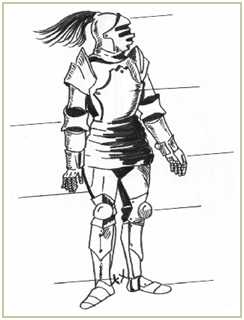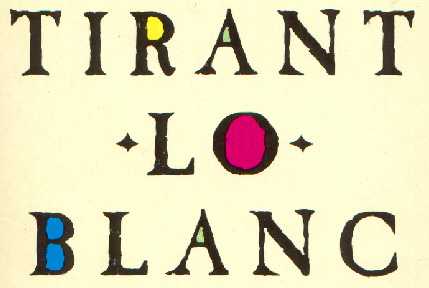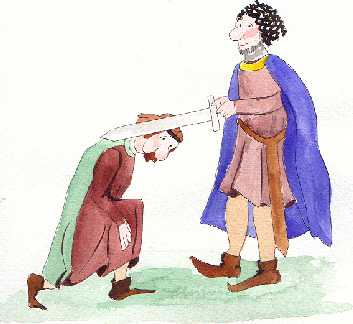
|
Activity
You have seen Braveheart. Describe the ceremony in which he was made a knight.
|
|

|

|
The ideals of Knighthood and Chivalry acquired a mystique that combined aristocratic qualities, Christian virtues and the Courtly love of women.
Aristocratic Qualities: The ideal knight should be a man of loyalty and generosity, like the heroes in epic poetry, such as Achiles.
Christian Virtues: In the eyes of the Church, he should put his sword at the service of the poor and the needy, and especially of the Crusades to the Holy Land.
The Courtly Love: From Southern France came the idea that a knight should serve a lady - often engaged or married to another - whom he loved passionately, but hopelessly. This is reflected in the French romances and Chansons de Geste sung by Troubadours.
|
|

|

|
Name the different parts of an armour, choosing words from the box below.
In the picture on the left, write the parts of the body that each part of the armour protects.
|
|
 
|
|

|
|

|
Match the names of some knight's weapons with their meanings according to the book Tirant Lo Blanc, written by Joanot Martorell & Martí Joan de Galba.
|
|

|

|

|
|

|
The common people, whom a knight should defend in peace and justice.
|
|

|

|
The world, where the knight is obliged to defend his king.
|

|
The obligation a knight has to lead people to virtue.
|

|
The True Cross, on which Jesus Christ died to preserve Mankind.
|

|
A knight's duty to defend the Church, which is also long in years and generosity.
|

|
As it can hurt in three ways, it means that the knight must serve in three ways too:
- He should defend the church, killing and wounding those who oppose it.
- He should attack all heretics.
- He should defend those who have no power at all.
|

|
Chastity.
|

|
|

|
|

|
In pairs, write the names of the weapons used during the middle ages.
Use a dictionary to look up the words that you don't know.
|
|
|

|
































